Figuring out what’s healthy and what we should eat feels awfully complicated in 2019.
Everyone has an opinion about how to eat and what to eat. That, my friend, is why I believe so strongly in getting back to something called: real food. Let me explain…
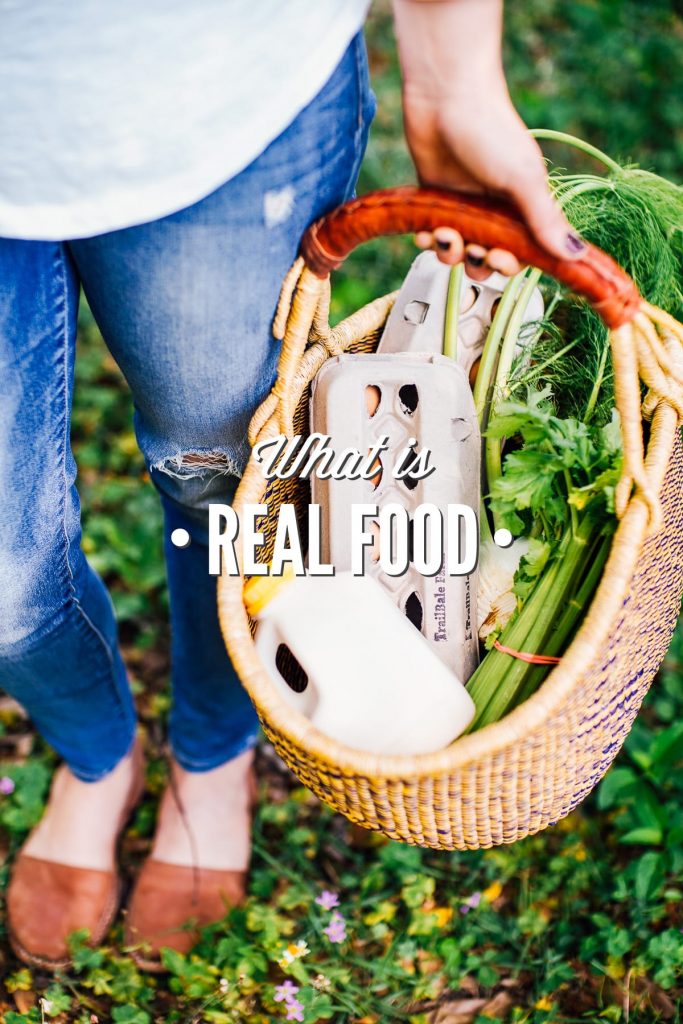
Want to Save This Article?
Enter your email & I’ll send it straight to your inbox. And you’ll get new recipes & tips each week.
In the past 80 years, our food system has gone through a change like never before. Granted, many changes are amazing. I love my electric oven and fridge. As Michael Pollan says in Cooked, “Industrialization isn’t bad. But when we cut corners and forget why we did something for so long, we end up hurting ourselves.”
For thousands of years, (healthy) people have prepared foods in certain ways, and for certain reasons. Over the past 80 years, we’ve cut big corners and listened to advertisers and lobbyists tell us what to eat (versus tradition) and how to eat. As a result, we’re now confused about food and incredibly sick.
Maybe our ancestors knew what they were doing? Maybe tradition is important?
This, my friend, is what real food is all about. It’s about returning to a traditional way of eating. To a way of eating (the only way of eating) that nourished healthy families for thousands and thousands of years.
Listen to Real Food 101 Podcast Episode
Want to listen instead of read? That’s cool! Just pop your earbuds in and hit play.
What’s Wrong With Ultra Processed Food?
Let’s start at the very beginning and take a look at what food is. I think the best place to turn is the dictionary.
Food
Something that nourishes, sustains, or supplies, used in the body of an organism to sustain growth, repair, and vital processes and to furnish energy.In his book, Food Rules, Michael Pollan offers us a few facts to consider when thinking about the food we put in our bodies. The first fact concerns the Western diet. The Western diet, also referred to as a Standard American Diet (SAD), usually consists of a lot of processed food, processed meat, lots of added sugars (and many times artificial sugars) and added fats (which are far from their natural state), along with refined grains (white flour, etc).
He writes that societies that have adopted such a way of eating“invariably suffer from high rates of the so-called Western diseases: obesity, type 2 diabetes, cardiovascular disease, and cancer. Virtually all of the obesity and type 2 diabetes, 80 percent of the cardiovascular disease, and more than a third of all cancers can be linked to this diet. Four of the top ten killers in America are chronic diseases linked to this diet.”
Pollan also writes “Populations eating a remarkably wide range of traditional diets generally don’t suffer from these chronic diseases. Traditional diets run the gamut from ones very high in fat (the Inuit in Greenland are an example which subsists largely on seal blubber) to ones high in carbohydrate (example: Central Indians have a diet largely made up of maize and beans) to the ones high in protein (the Masai tribe in Africa live off cattle blood, meat, and milk.)”.
Pollan points out that these are extreme examples. But these serve a point. The new western diet, a diet that’s made up mostly of highly processed food, is making us sick.
Real food makes you feel good. This isn’t to say that we won’t get sick when consuming real food. We don’t live in a perfect world and illness happens.
But real food supports the body; it nourishes the body. Real food contains vital nutrients, like vitamins and minerals and naturally-occurring fats, that our bodies need for support and to function in a healthy way. Processed food doesn’t offer this. It leaves the body undernourished, and lacking the basic nutrients needed to thrive.
I know that some folks argue that we live longer today than traditional cultures, but I would point out, as Pollan does in his book, that this is due to improved infant mortality rates, as well as improved modern hygiene advancements (<–which I love and appreciate).
What Is Real Food?
1. Real food is traditional.
Real food is about food that has withstood traditions. In the past, people didn’t rely on profit-driven companies to tell them what to eat or how much to eat. As Pollan says, “Don’t eat anything your great grandmother wouldn’t recognize as food.” Looking at traditional societies, we know that historically, we are omnivores, eating both meat and plants.
2. Real food is intuitive.
Our ancestors ate when they were hungry, and stopped when they were full. Food that isn’t full of additives, but rather is full of beneficial nourishment that our bodies recognize, allows us to eat intuitively. There isn’t anything added to real food–like trans fat (there is naturally-occurring fat that satisfies and nourishes), or sugars that are altered from their original state by food scientists in a lab to make us addicted to the taste of the food.
Real food also allows us to be in-tune with how the body reacts to food. Eating real food teaches us to listen to our bodies versus marketing.
3. Real food is ingredients.
Ingredients that are as close to their natural state as possible. Jamie Oliver says, “Real food doesn’t have ingredients, real food is ingredients.” Oats, almonds (almond flour), grains, yogurt, cheese, meat are all ingredients, used to create meals or, at times, enjoyed on their own.
4. Real food is full of variety and tastes amazing and different.
Highly processed food is engineered to always taste the same. For example: A Big Mac is specifically formulated to always taste the exact same, with no variation.
Real food, on the other hand, tastes different depending on the variety, the season, and how it’s grown or where it’s grown. All beef doesn’t taste the same, neither does milk (it actually changes with the seasons, as the diet of a grazing cow changes), cheese changes based on how it’s cultured (a beautiful fermentation process that transforms milk into a beneficial, bacteria-rich food), and tomatoes and lettuce vary in flavor.
5. Real food is seasonal.
Broccoli and peaches aren’t grown year-round, instead there’s a specific season in which broccoli and peaches are grown. This is true for all real food. And this is a beautiful thing, because it means that we were intended to eat variety. Our body needs a variety of nutrients, and the seasonal shift in food provides us with this variety in a very natural way.
6. Real food has a face and name.
Real food is grown by someone, raised by someone, cared for by someone. Food is not just a substance. Real food has a story.
7. Real food is nourishment and should make you feel good.
One of the dangers of highly processed food is the lack of variety in the ingredients consumed. Flip over most packaged foods and you’ll find the same “ingredients” repeated over and over: soybean oil, enriched flour, vegetable oil, sugar of some sort, etc. Where are the nutrients? How can the body thrive?
When we enjoy real food, which changes with the seasons, we are getting all the nourishment we need, throughout a wide variety of foods that are constantly changing throughout the year.
What Does Real Food Look Like?
Here’s the foundation of what real food looks like.
- Grass Fed, Pastured Meats: Animals that have been raised and fed as they were intended when created, with grass underneath and the sun overhead. We use all parts of the animal, including the bones for nourishing broth. Chicken, beef, lamb, pork, and wild game.
- Eggs: From chickens that have been raised on pasture, roaming free with lots of sunlight.
- Fats: Naturally-occurring fats that have nourished healthy families for thousands of years, such as: butter from grass-fed cows, coconut oil, ghee, extra virgin olive oil, avocado oil, tallow, and lard. Learn more about fats and oils 101.
- Grains, Nuts, and Seeds: Whole grains and minimally-processed with an emphasis on ancient grains and variety: spelt, kamut, einkorn, even whole wheat. Also, ancient practices, such as sourdough bread, if possible. Also: beans, nuts, and seeds.
- Fruits and Veggies: Preferably in season and grown as local as possible, using organic practices. Including lots of fresh herbs. Cooked, raw, and fermented. While organic produce is encouraged, I don’t always buy organic produce. I use the EWG list when shopping at the store. And if purchasing from a local farm or market, many farms aren’t “certified organic” but use organic practices.
- Dairy: Raw or pasteurized and full fat from grass-fed cows, or goats or sheep. I only recommend purchasing raw milk if you know the source and have checked out the farm for cleanliness and safety. Pasteurized milk can be found in the store. I recommend avoiding ultra-pasteurized milk, since this milk has been heated to such a high degree that it kills everything. Anytime you see the words low-fat or fat-free you know a lot of junk has been added to compensate for the loss of nourishing fat. Dairy includes: milk, cheese, cream cheese, sour cream, yogurt, kefir (a fermented yogurt drink), cottage cheese.
- Salt: Real, unrefined salt that hasn’t been stripped of its nourishing minerals. I use Real Salt.
- Seafood: Raised in the wild versus a fish farm.
- Sweeteners: As close to the natural state as possible, such as: raw honey, pure maple syrup, and minimally-processed sugars. Learn more about Sweeteners 101.
- Beverages: Water and beverages made with real ingredients: tea, coffee, kombucha (a fermented tea), milk (from nuts, seeds, or dairy). Even wine and beer, and cocktails–just watch the ingredients and stick with crafting your own cocktails using simple liquors and fresh ingredients.
What Real Food Is Not
1. Real food is not a trend or fad.
While we may be hearing more about real food due to the internet, books, and documentaries, real food isn’t new. It’s not a trend that will be popular for a few years and then replaced with a new fad. Real food has always been around, since the dawn of time. It’s the way generations before us ate, and the way of eating that future generations will hopefully return to. Highly processed food, which lacks nutrients and is made with manipulated ingredients, hasn’t always been around. If anything, processed food is the new kid on the block.
Now, there are certainly trendy real foods. Kale has been having a spotlight moment, along with chia seeds, cassava, almonds, and cauliflower (cauliflower pizza). While blogs may be making these particular foods trendy, they are simply real ingredients that have been around for ages.
2. Real food is not a restrictive diet, or even a diet at all.
A real food lifestyle is not about limiting food. It’s about saying yes to actual food (ingredients) versus something that’s trying to look and act like food. And here’s the thing, once you begin eating real food, your palate changes and you realize just how amazing real food tastes and how good you feel.
3. Real food is not about depriving yourself.
As Harry Blazer, a food and beverage trends researcher says, “Eat anything you want, just cook it yourself.” Highly processed food has made it easy for us to effortlessly grab chips, cookies, muffins, and other foods that should require spending a fair amount of time in the kitchen to make. Making food yourself means you’re probably not consuming cookies at every meal–it lends us to eat more variety.
There is a rise in real food companies, making convenient options that are made with real ingredients. This is a blessing and curse. I believe the majority of our diet should come from home-cooked foods, made with simple ingredients. These real food convenience options are amazing and can be sprinkled in to help us simplify, when needed.
But we shouldn’t exchange processed food for more boxes and packages, just because we can. Real food is about taking responsibility for our food, and learning how to prepare food so we can nourish our bodies with simple ingredients.
4. Real food is not about counting calories or eliminating naturally-occurring fats.
Calories naturally occur in food, along with fat. We need calories and fat to thrive. Since we’re eating a lot of variety when consuming real food, we don’t have to worry about consuming too much.
5. Real food is not keto, paleo, gluten-free, dairy-free, or vegetarian.
These are variations of a real food lifestyle and, therefore, shouldn’t be seen as the only way to enjoy a real food lifestyle.
How to Make the Switch From Ultra Processed Food to Real Food
1. Change your mindset about food.
When it comes to food, many of us have been influenced by marketing, food packages, food company slogans and commercials. Companies spend billions every year on marketing for a good reason.
Before we make any physical changes to what we purchase or how we eat, we must first change our mindset. This was the greatest struggle I faced when first thinking about a real food lifestyle. Still, to do this day, I find it’s so easy for negative mindsets–based on past influences from marketing–to creep in.
Stop looking at food negatively with a fear mindset. Food is about more than just fat and calories. And remember, fat and calories are good for you–they are vital and essential. Also, stop thinking: Ugh, I have to cook. Start thinking: I get to cook, I get to nourish my family and care for myself.
Start thinking about food in a positive light: food is nourishment, food is a celebration, food is delicious, food is fuel and makes me feel good.
2. Focus on making changes to one meal at a time.
Focus on making over one meal at at time versus tackling all meals. Maybe this is breakfast or dinner, or lunch.
Focus on preparing 1 or 2 real food breakfasts in a week. Weekends tend to be easier for our family, since they’re less hectic. Based on this, I would focus on preparing a homemade breakfast on Saturday or Sunday. This will give you time to learn how to cook a homemade breakfast. And for some foods, you may find that you have leftovers, like: pancakes, waffles, muffins, granola, or hard boiled eggs. The leftovers can roll over to another breakfast on a different day.
Slowly, when you feel ready, add an additional day where you serve real food versus relying on a box of Pop Tarts. Slowly build up your real food cooking muscles.
In the beginning, everything is hard. When I first started working out and doing push-ups, I could only do one. I wanted to do 50. Slowly, over time, I’ve worked my way up to 5, then 10, and now I can do 50 pushups. Transitioning away from relying on boxes and packages for every meal is the same way.
You won’t start out eating real food for 3 meals a day, 7 days a week. Just thinking that way feels exhausting. But 1 meal a week? Now that’s doable. And slowly build on that success.
Your palate will also change during this time. And your family won’t feel like you’re taking away all the processed food at once–which generally makes the transition smoother.
Transitioning from a mostly processed food diet to real food is a journey. It’s about a long-term lifestyle. Focus on the small step you can make right now.
3. Focus on learning to cook, particularly basic recipes you can rely on over and over again.
Real food is about taking responsibility for our food, and learning how to prepare food so we can nourish our bodies with simple ingredients. You can’t enjoy a real food lifestyle without learning how to cook. In fact, learning to cook is the very foundation real food is built on.
People say, “I don’t have time to cook.” But we all find time for what matters most to us. If nourishing our family is important, we will find the time.
While individual and very unique recipes are great, I recommend focusing on basic recipes that you can rely on over and over again. Also, think about the highly processed food that your family currently loves and how you can remake that food with real ingredients.
Does your family love pancakes? Focus on finding an amazing pancake recipe that you can use every single week. Master that and then focus on a good muffin recipe. And then a great salad dressing, mac and cheese, or how to cook a whole chicken.
As I mentioned before, build your muscles in the kitchen and slowly build a list of recipes you can confidently cook and rotate.
Now, to do this, you’re going to need to gather real food recipes. Keep a list of recipes that are made with real, simple ingredients. Avoid recipes calling for things like: canned biscuits, condensed creamed soups, or anything that isn’t a single ingredient or a condiment (like mustard).
Keep a list of your favorite recipes and your family’s favorite recipes. You don’t need to know how to cook a million different dishes, or have 30 cookbooks or 100’s of recipes at your disposal. As you learn to cook, and slowly build up your real food muscles, take note of the recipes your family loves and the recipes you love cooking. Keep this list somewhere safe so you can refer back to this list. Or, keep a Pinterest board, or a note in your Notes app on your phone.
4. Shop the outer aisles of the grocery store.
The outer aisles of the grocery store, whether you’re shopping at a regular grocery store or Whole Foods, is where the bulk of your food should slowly begin to come from. You’ll find this is a natural transition as the recipes you’re beginning to try should keep you in these aisles.
This will also be a slow transition; one that may feel scary at first. As you build your real food muscles, you’ll find those outer aisles are your go-to source for food and you’ll feel comfortable shopping the outer section of the store.
The inner aisles aren’t evil, they also have real ingredients, like: oats, flour, barley, beans, rice, canned tomatoes, frozen fruits and veggies.
And what about organic?
In the beginning, I wouldn’t even worry about organic, or pastured meat or eggs. If you can find this stuff right now, great! If so, make the switch to the pastured eggs or grass-fed meat. Many stores are now carrying these options.
I didn’t start out purchasing these options. I started purchasing meat that wasn’t pastured or grass-fed. It took years, of sourcing and figuring out a grocery budget, to get to that point. My point is, don’t feel like you’re not doing a good job, or you’re not doing enough, just because you’re not purchasing a certain kind of meat or organic veggies. This all comes with time.
In the beginning, focus on ingredients and learning to cook versus packaged, boxed, overly-processed food. Slowly, you’ll start finding sources for pastured meats and eggs.
As you continue on your journey, and you’re cooking and preparing more meals, you may find that shopping at the same conventional grocery store for real food ingredients can be limiting and expensive. That was my experience. Of course, this will depend on your area and your store selections.
While many conventional chains are beginning to carry more real food options, the vast majority of food is still highly processed, and it can be particularly challenging to find quality dairy and meats and eggs from some of these conventional stores. Here are a few of my favorite options for expanding your shopping horizons and sourcing real food ingredients:
- Health/Natural Food Store: Small, locally-owned stores or Whole Foods (yes, can be expensive, but not always compared to regular stores). These stores specialize in real ingredients and packaged foods made with these ingredients. Health food store variations: Earth Fare, Sprouts, Trader Joe’s.
- Farmer’s Market/Produce Stand: Fruits, veggies, nuts, seeds, pastured eggs and meat, and locally-made foods (like sourdough bread).
- Local Food Co-op: A co-op is made up of people that come together to purchase real food. To find a co-op, use Google, ask around at a health food store, or ask your friends on social media. For example: A gal who works with me said the other day, “I’m going to stop on my way to pick up my son and get our raw milk.” What?! I had no idea she knew of a source for raw milk in our area. #score
- Online Shops, like Amazon and Vitacost: Vitacost is amazing! Free shipping over $49 on real food pantry items, like: pasta, canned tomatoes, snack bars and chips, etc.
- Befriend a Farmer: Visit a farmer’s market. Get to know the face and name behind food. These connections many times lead to other connections for food. Also, many times this food is cheaper because you’re cutting out the middleman and you’re buying in season.
- Start a Garden
5. Clean out and replenish.
Slowly, as you’re cooking, build up the real food ingredients needed to make your favorite meals. This will be a natural transition as you learn to cook, start building your real food muscles in the kitchen, and start relying more on those favorite recipes.
I’ve created a PDF that includes the real food I keep stocked in my fridge, freezer, and pantry.
Take the Next Step…Get Started with a Real Food Lifestyle
I’ve created a step-by-step guide to help you get started with real food. Grab your guide here. This PDF guide walks you step-by-step through ditching ultra processed food to enjoying real food.

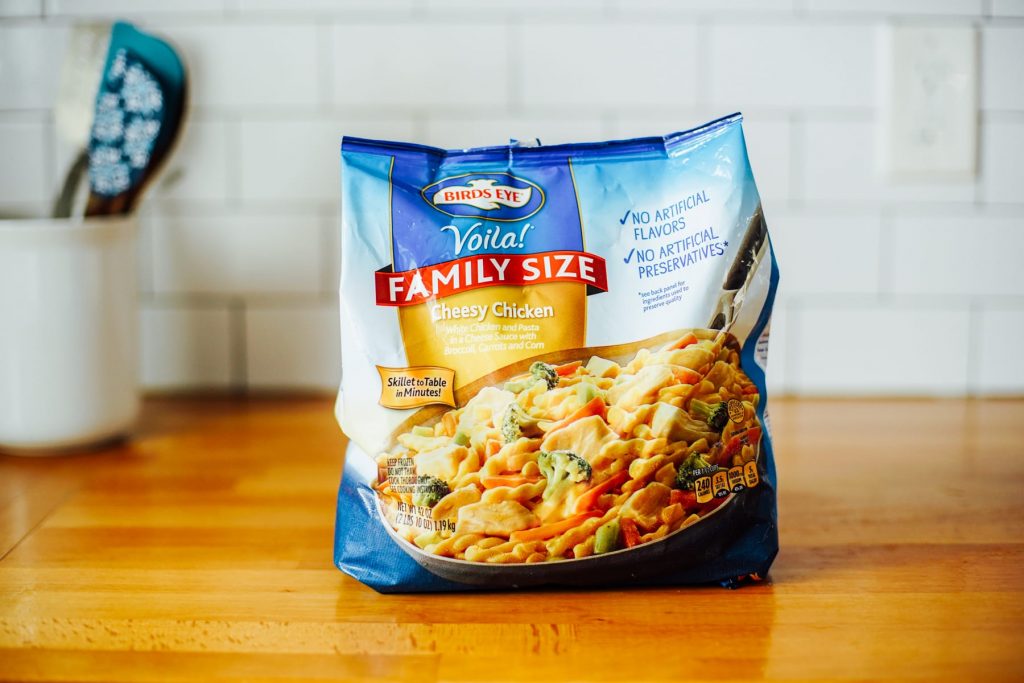
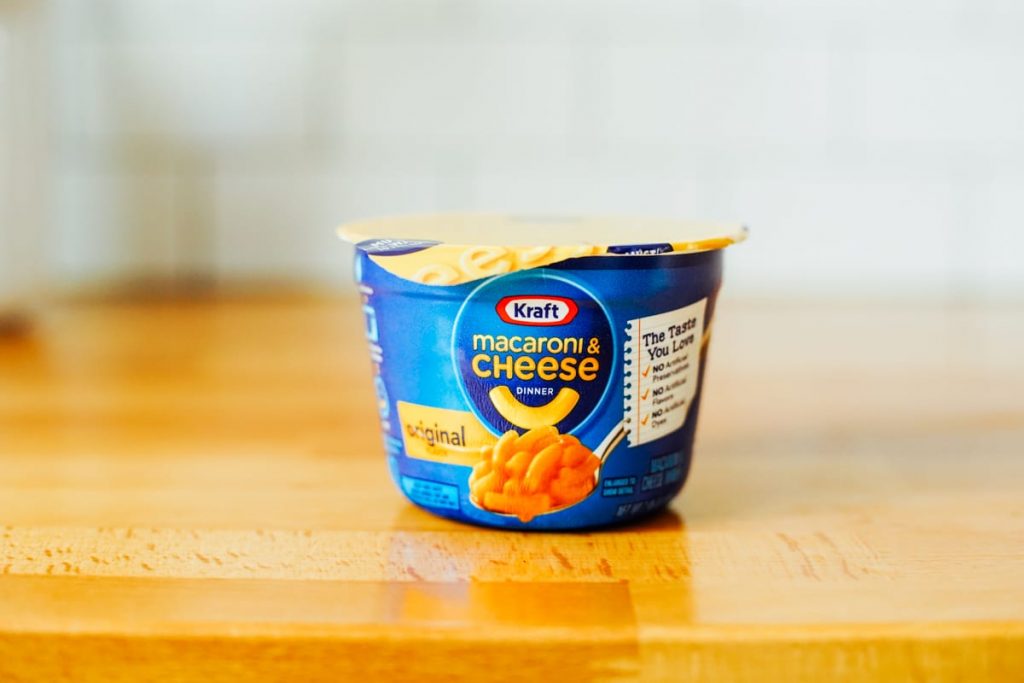
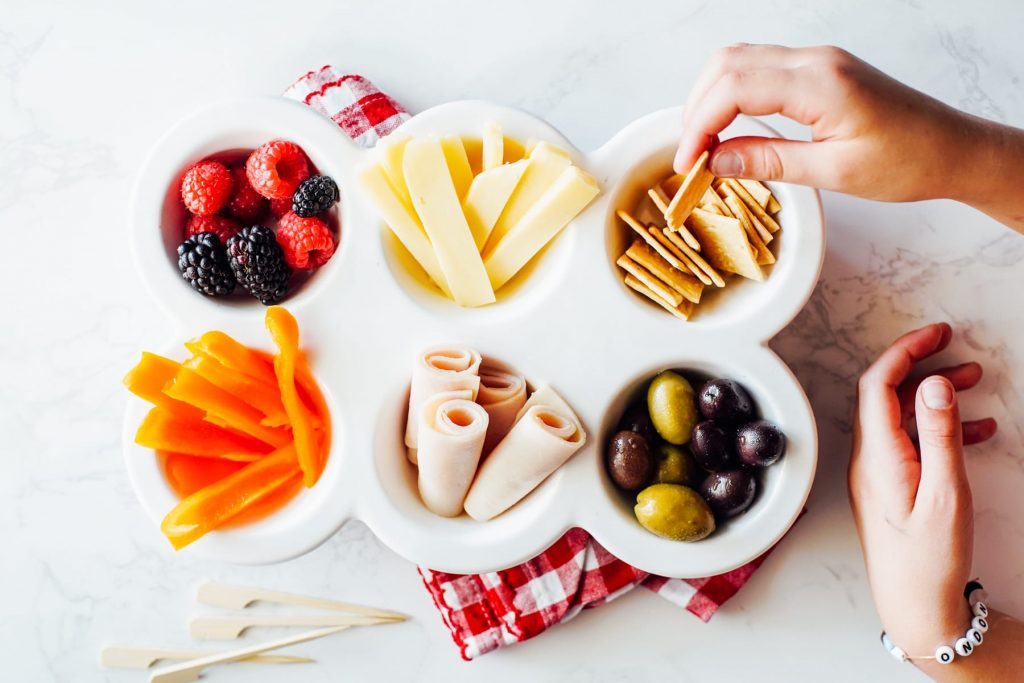
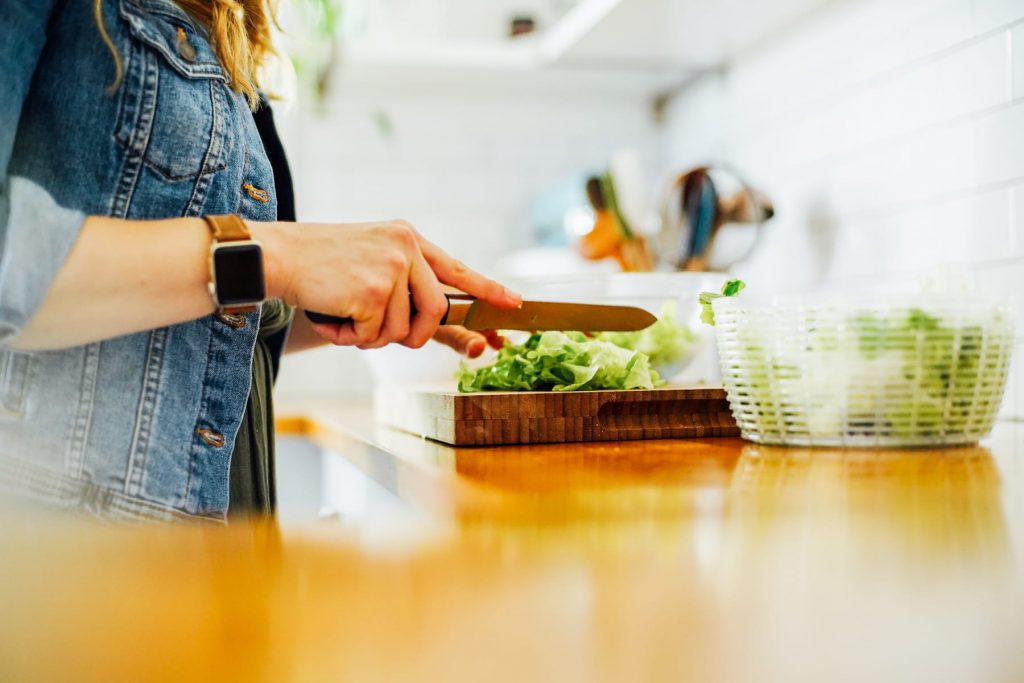
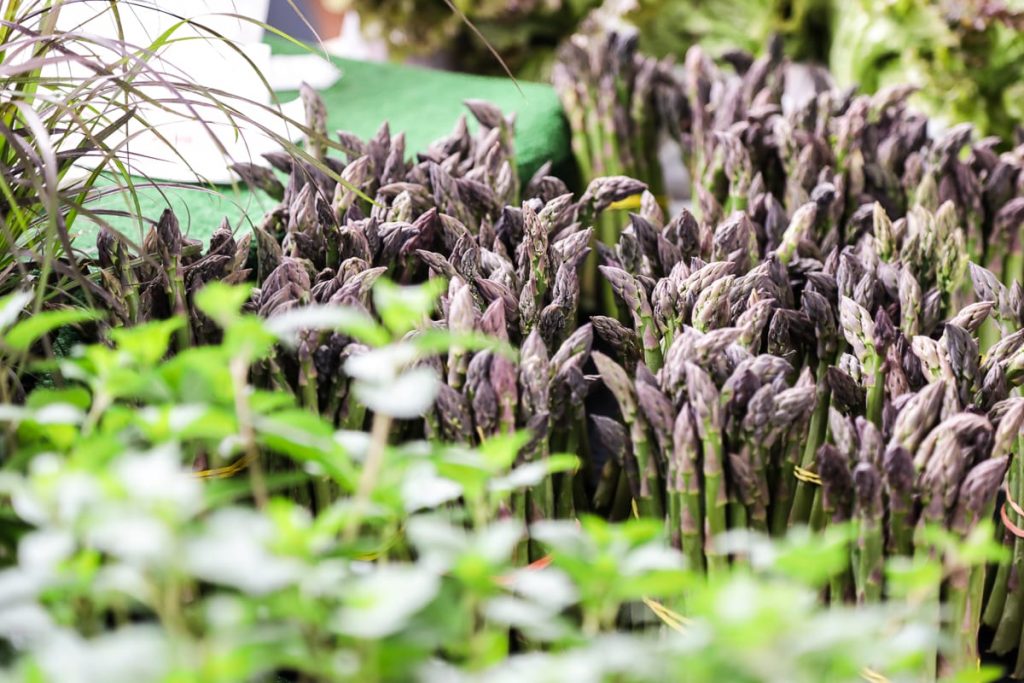
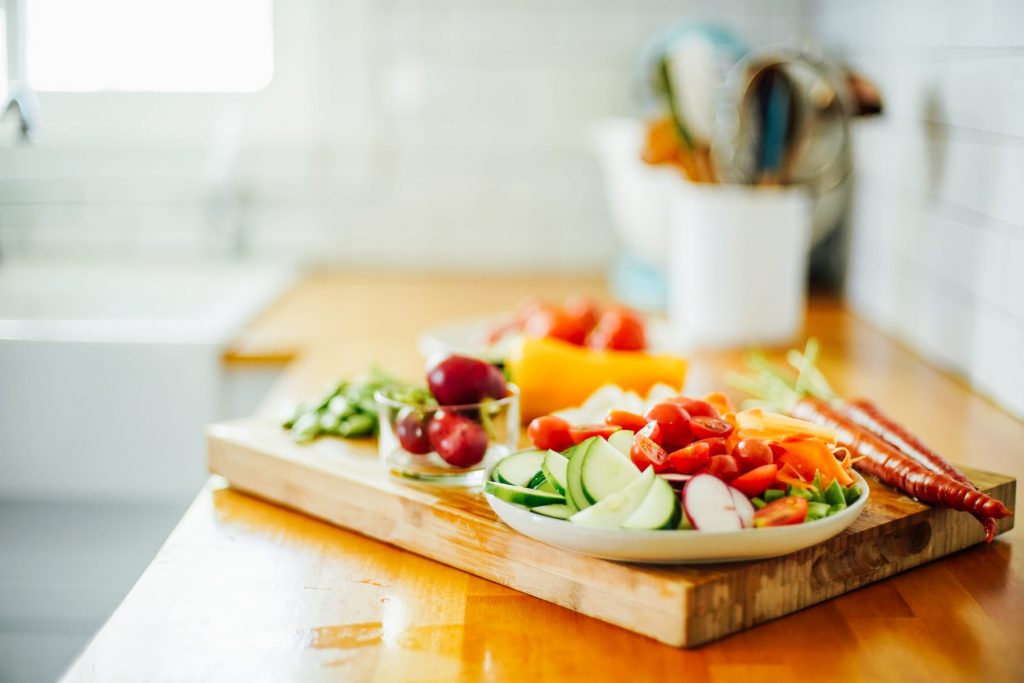
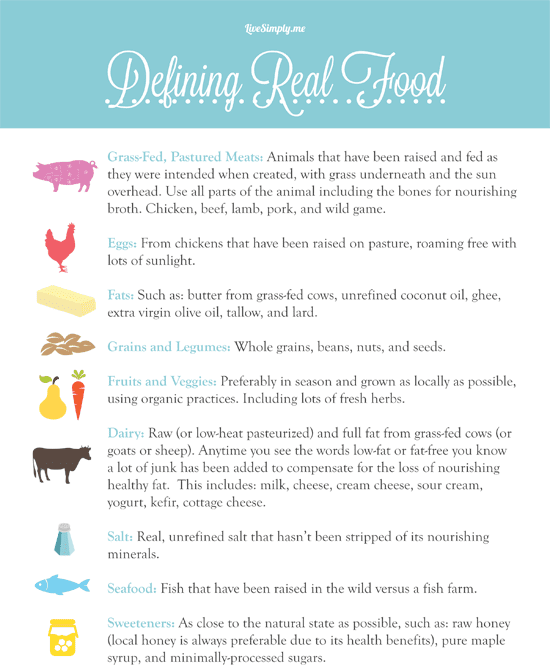
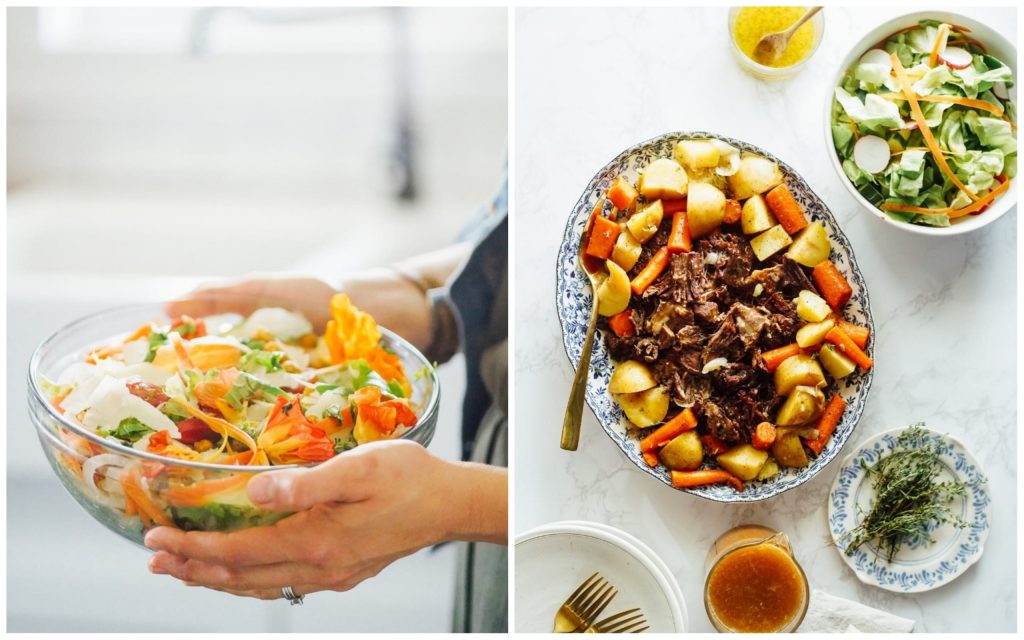
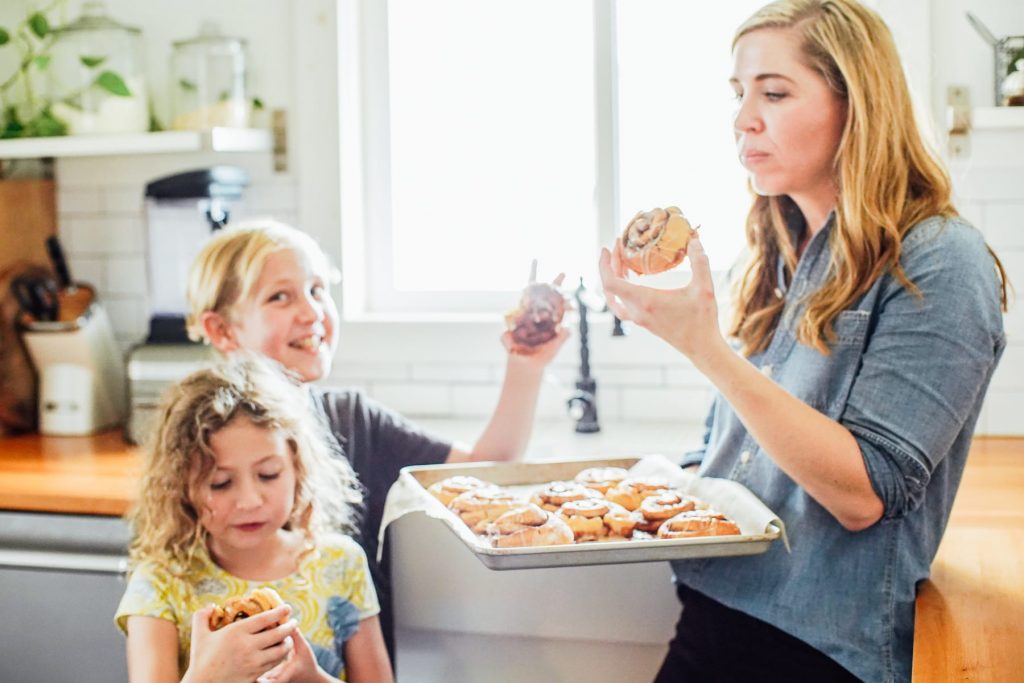
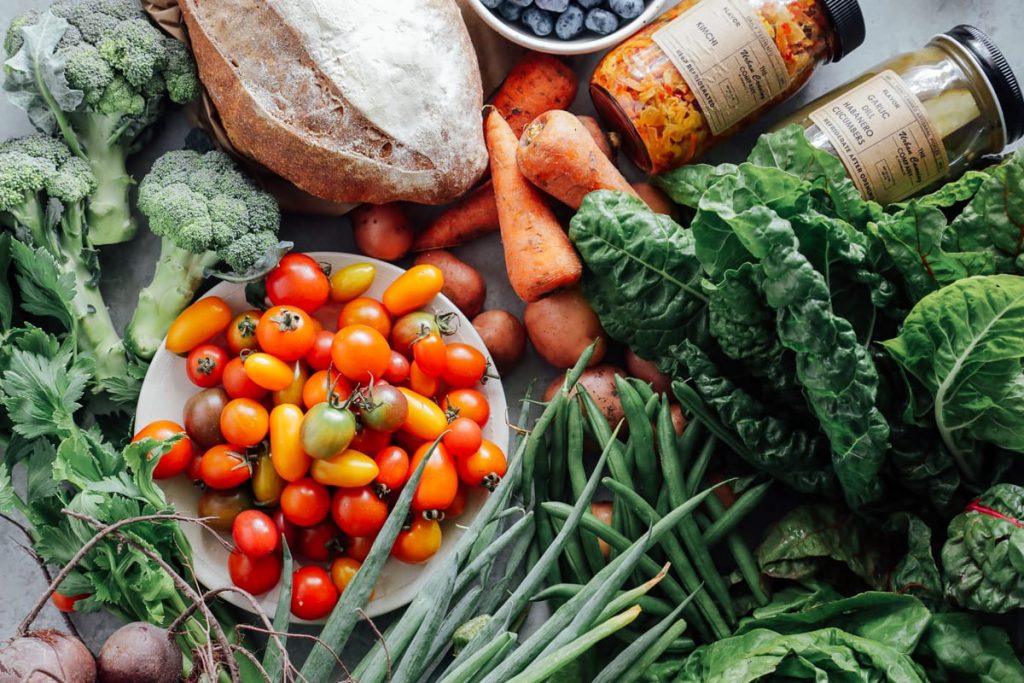
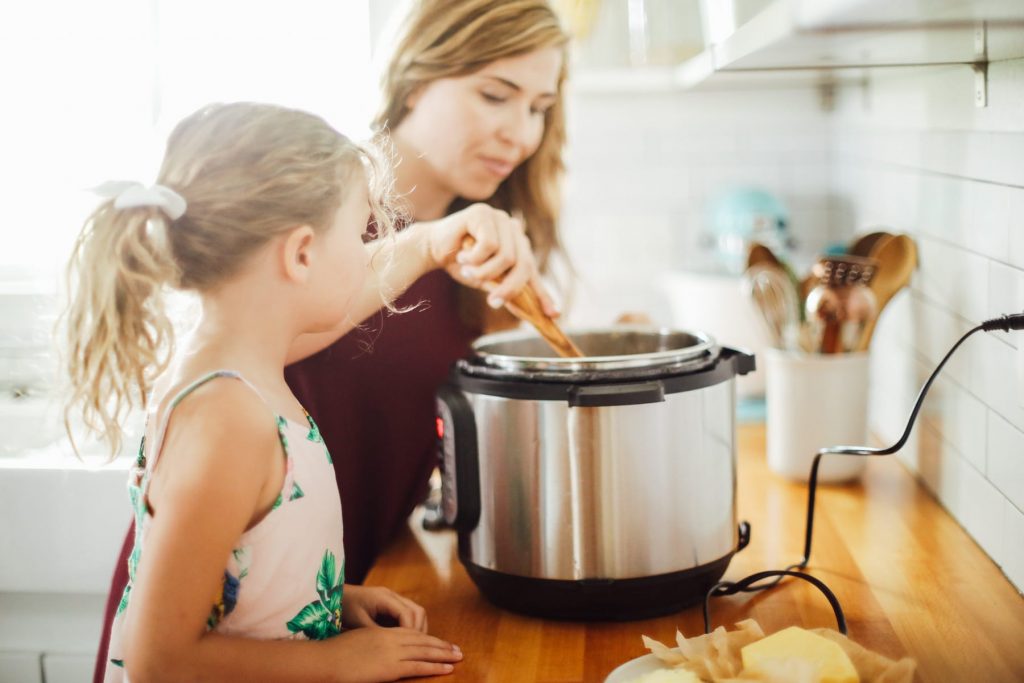
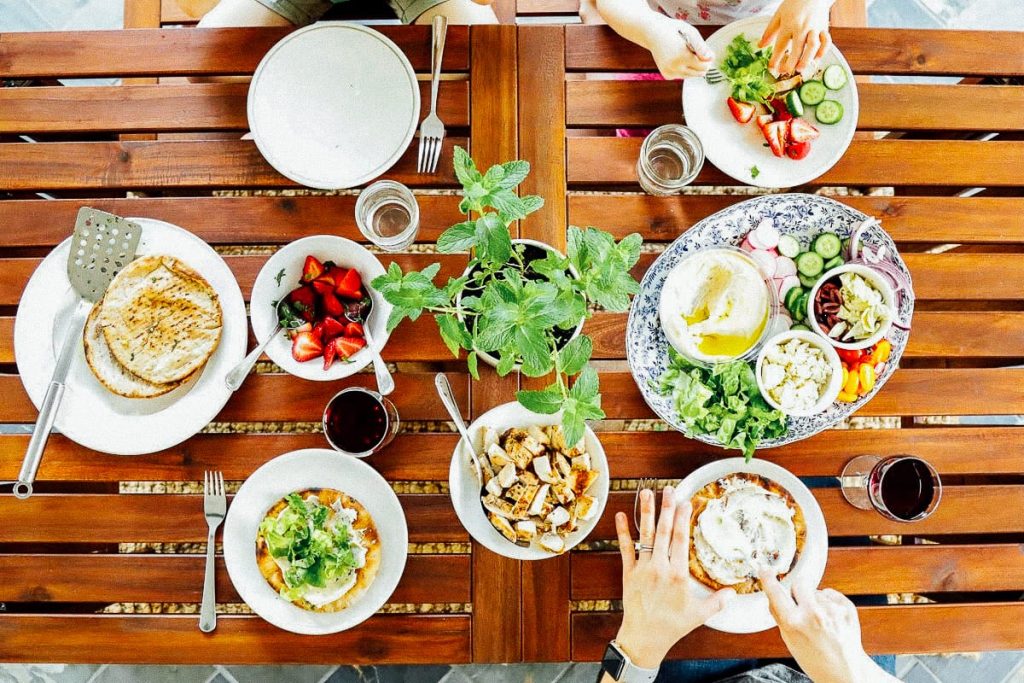
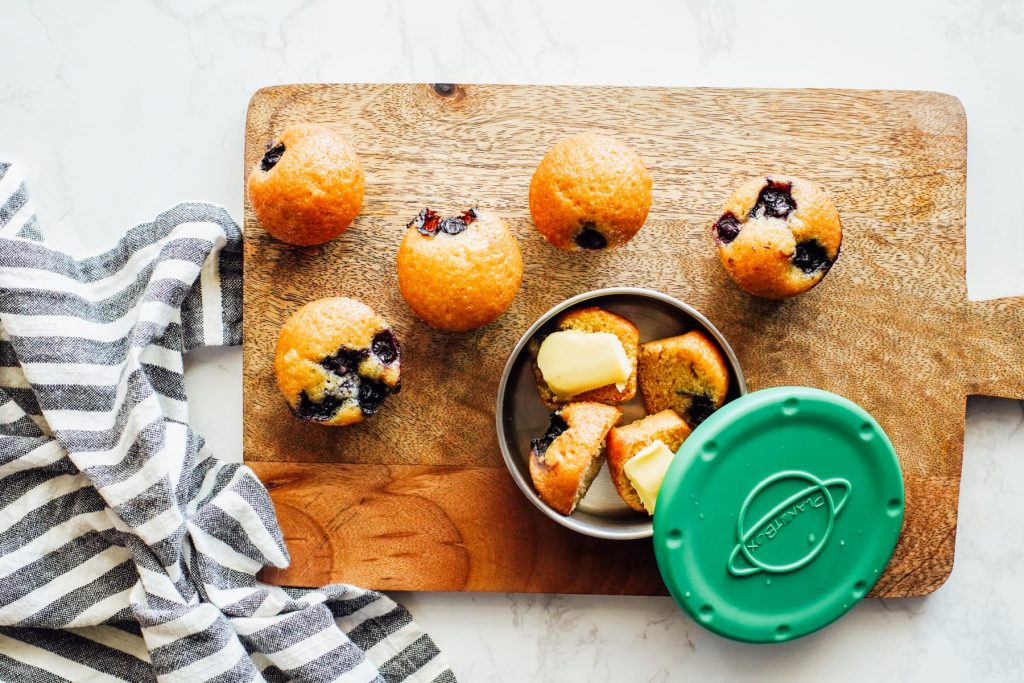
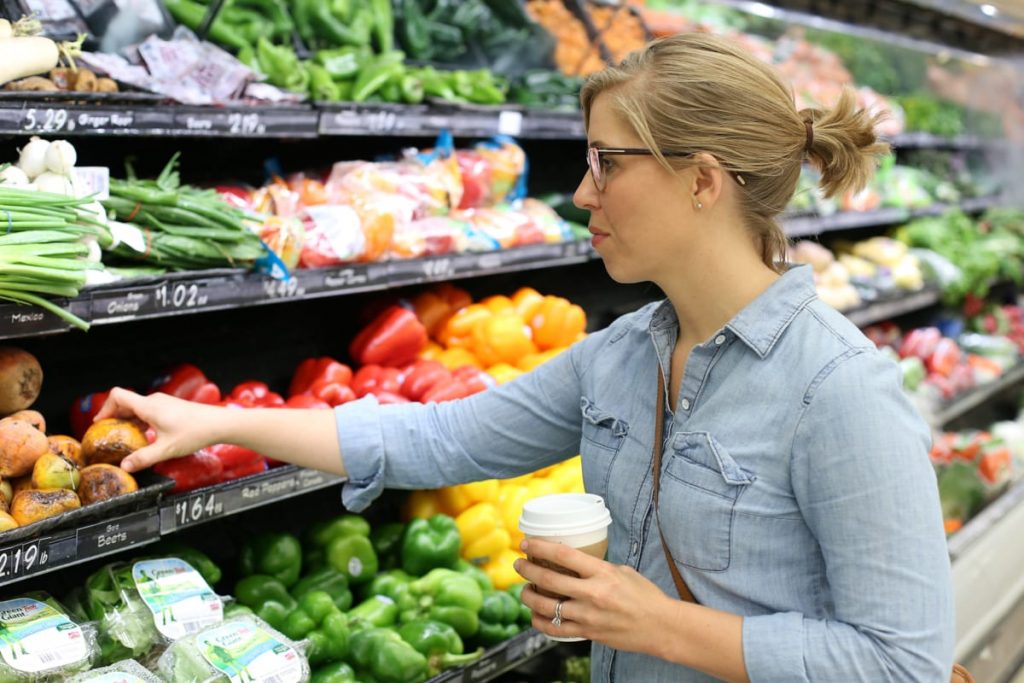
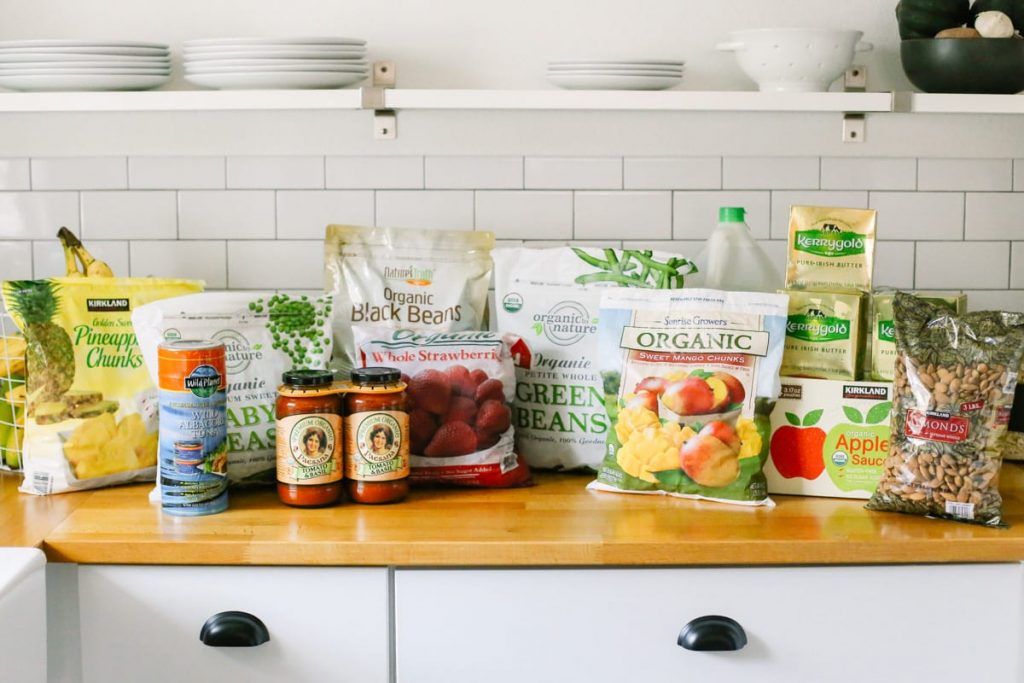
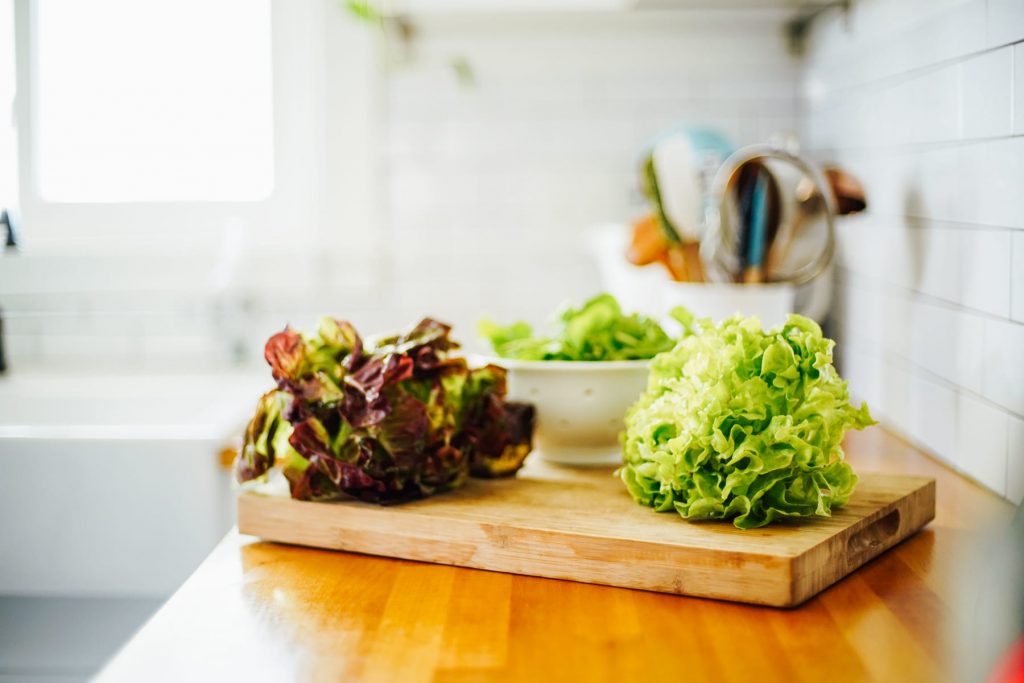
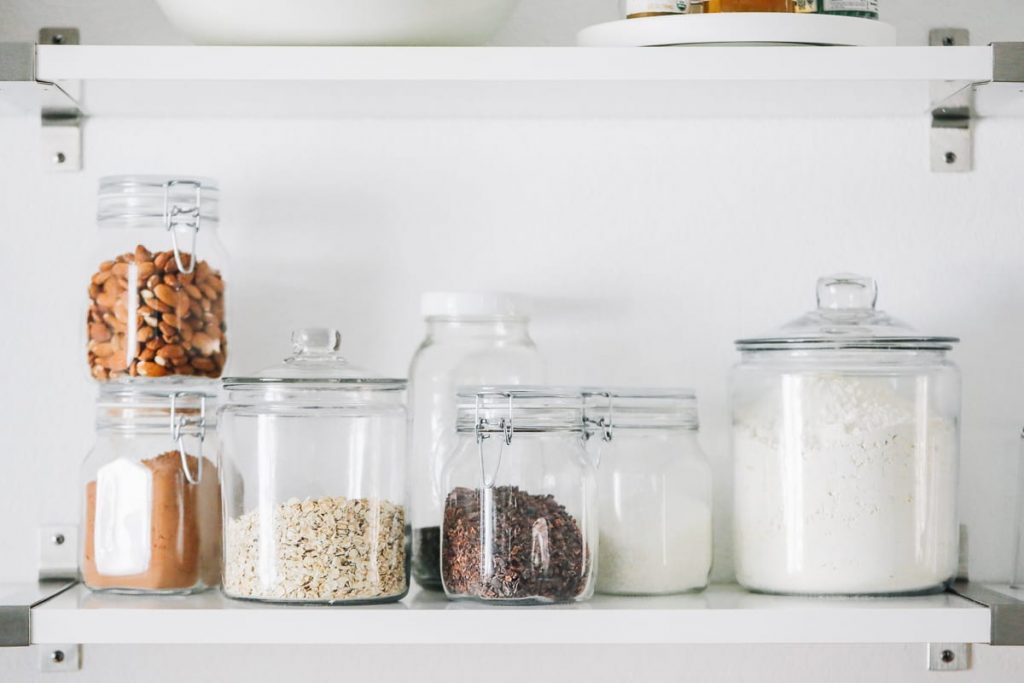
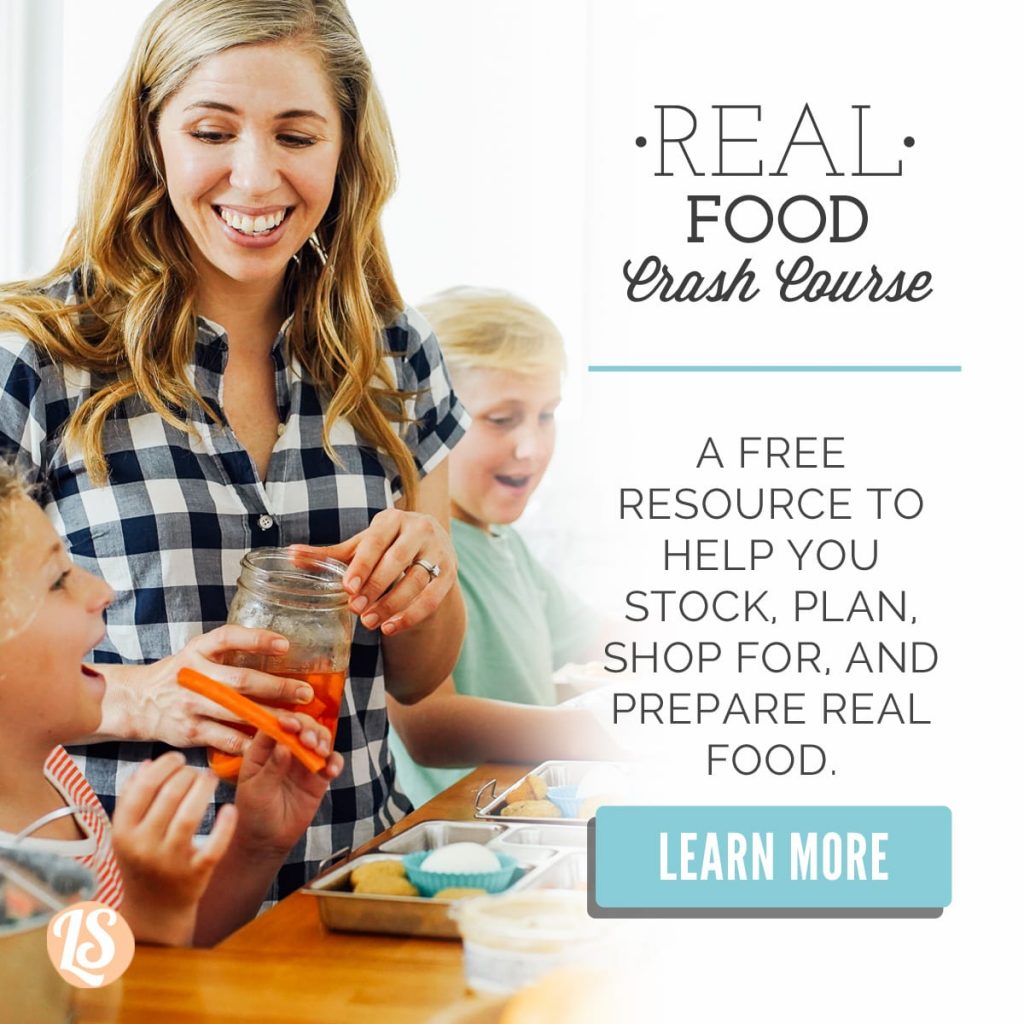
I am so looking forward to this ? Thank you. I am new on this journey so I appreciate this series.
Hi Kristin, I’m a mom in my 50s with 2 married kids and 2 high schoolers. We’ve all found that our family of ADHDers has a tendency toward terrible processed and fast-food because we are too tired or unfocused to think about it. Thankfully, my husband is a mountain biker and searches for clean eating ideas. I’ve become a good cook and try to overcome the easy dash to BK, so I am so thankful to find your blog via Pinterest. It is exactly what I’ve been looking for as a base for reshaping our attitude and effort toward simple, whole foods. I’m converting our favorites to more nutritious, simple recipes and compiling a notebook for myself and for each of my kids, with your intro in the front. I’m also very allergic to many chemicals and botanicals, so I appreciate your natural cleaning methods. Yay for vinegar!
Hey June, Thank you so much for sharing! I’m so encouraged from reading your story–it’s such a joy to read about other families on this journey of living real and natural.
Hi Kristin! I am a teen moving towards a clean, real food diet. Your blog has really been helping with that. I’m having trouble giving up some of my favorite foods though, how do you do that?
Hey Cassie, My best advice is to find better store-bought alternatives or homemade options for your favorite foods. If you love flavored yogurt, purchase plain yogurt and add fruit and honey. If you love a good burger, make them at home with grass-fed beef. If you love cereal, look for a “cleaner” store-bought option. Slowly with time your taste-buds may also change as you wean yourself away from the highly processed food.
Hi! I’m a new reader and am loving your blog! The salad at the end of this post looks delicious! Is there a recipe for it?
Hey Shauna, Welcome to Live Simply! I’m so glad you’re loving the blog! I don’t have a written recipe for the salad on LS, but I’ll add it to my calendar for sharing :).
Hi Wow… Such a pretty site… I shared your like with my wife on FB…
I too am starting a real food journey and have also started a blog. would love your comments on things I can do to make it a better resource for our Brothers and Sisters in Christ Jesus.
My Goal, is to take the Real Food, Paleo message to the people of God, because we need it right…
Here’s my site.. feel free to remove URL if its not welcome http://www.rfdiet.com
God Bless
Jeff
Thank you. Looking forward to looking at your blog.
Kristin what about pasta? Any particular kind that you enjoy?
I usually buy bionaturae brand organic 100% whole wheat pasta at Nature’s Food Patch. I can pick it up on sale there for around 2/$5. They make everything from macaroni, to lasagna noodles, to spaghetti. http://www.amazon.com/bionaturae-Organic-Whole-Spaghetti-16-Ounce/dp/B001IZM7QQ Ezekial brand also makes a fantastic sprouted wheat spaghetti noodle, http://www.amazon.com/Food-For-Life-Ezekiel-Spaghetti/dp/B000LKV4LS/ref=sr_1_2?s=grocery&ie=UTF8&qid=1366080337&sr=1-2&keywords=ezekial+spaghetti. I also sometimes use the vitaspelt brand pasta http://www.amazon.com/VitaSpelt-Organic-Shells-Whole-10-Ounce/dp/B000FDDOEG.
Thank you so much for sharing your wisdom love love love this excited for the change in my family to start eating real nourishing foods and my husband is on board awesome I would like an example of a dinner you serve in your house 🙂 thank you for sharing 🙂 i cant wait to try raw milk 🙂 im going to do some research and find out where i can get some groceries like this near my house I live in Riverview I want to make all your recipes that you share thank you again
Diana, I am so excited for you guys! It wasn’t an overnight fix for us, but little by little real food became the norm in our house. I look forward to sharing meal plans soon, recipes I love, and some great places to shop for food! Right now a great site is http://eatwild.com/ and http://www.localharvest.org. Both sites will provide you with info on local farms and ranches near you! Tonight we are having stir fry with lots of chopped veggies, some leftover chicken meat, greens tossed with a homemade honey, organic soy sauce, and garlic mixture over brown rice…easy and nourishing!